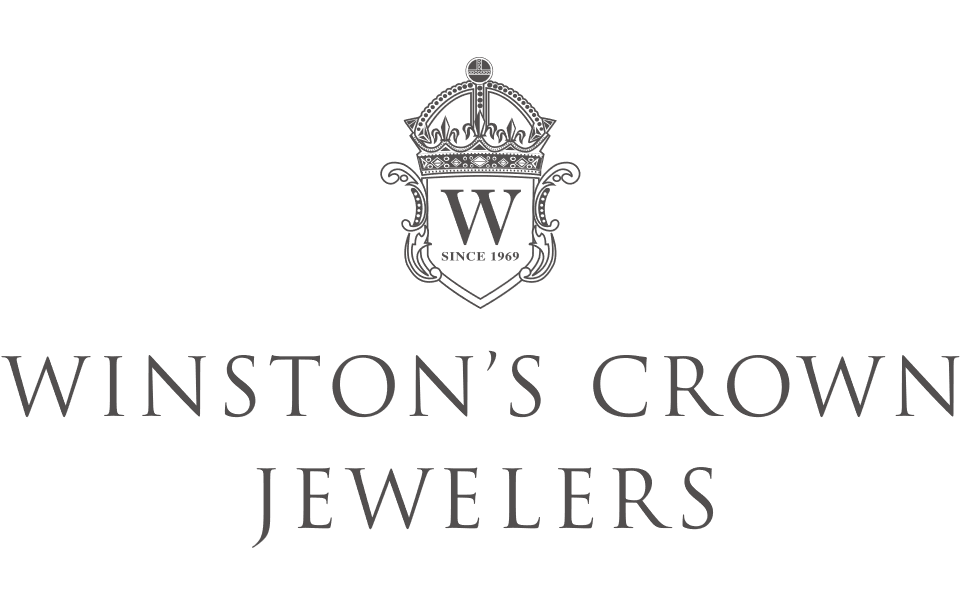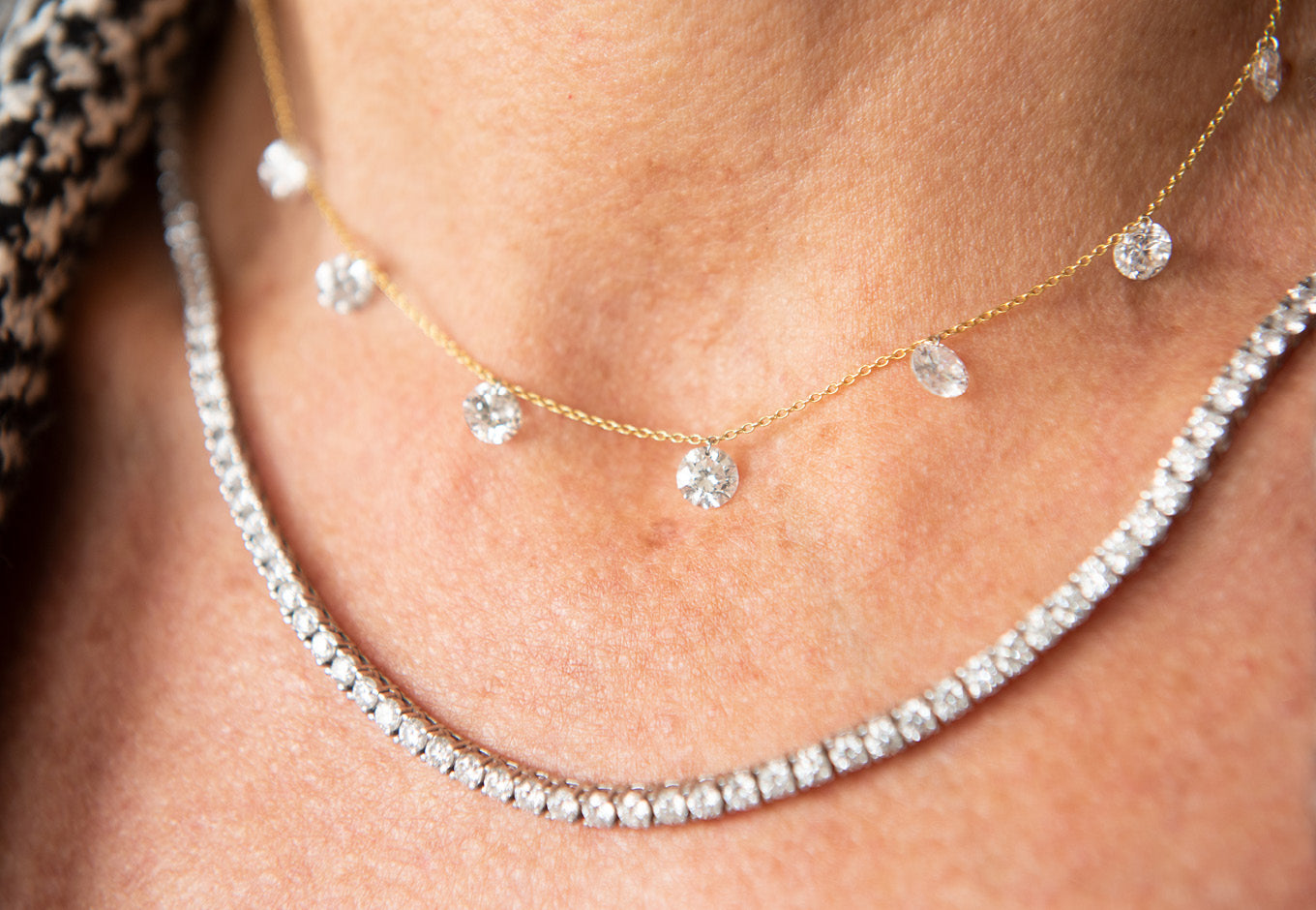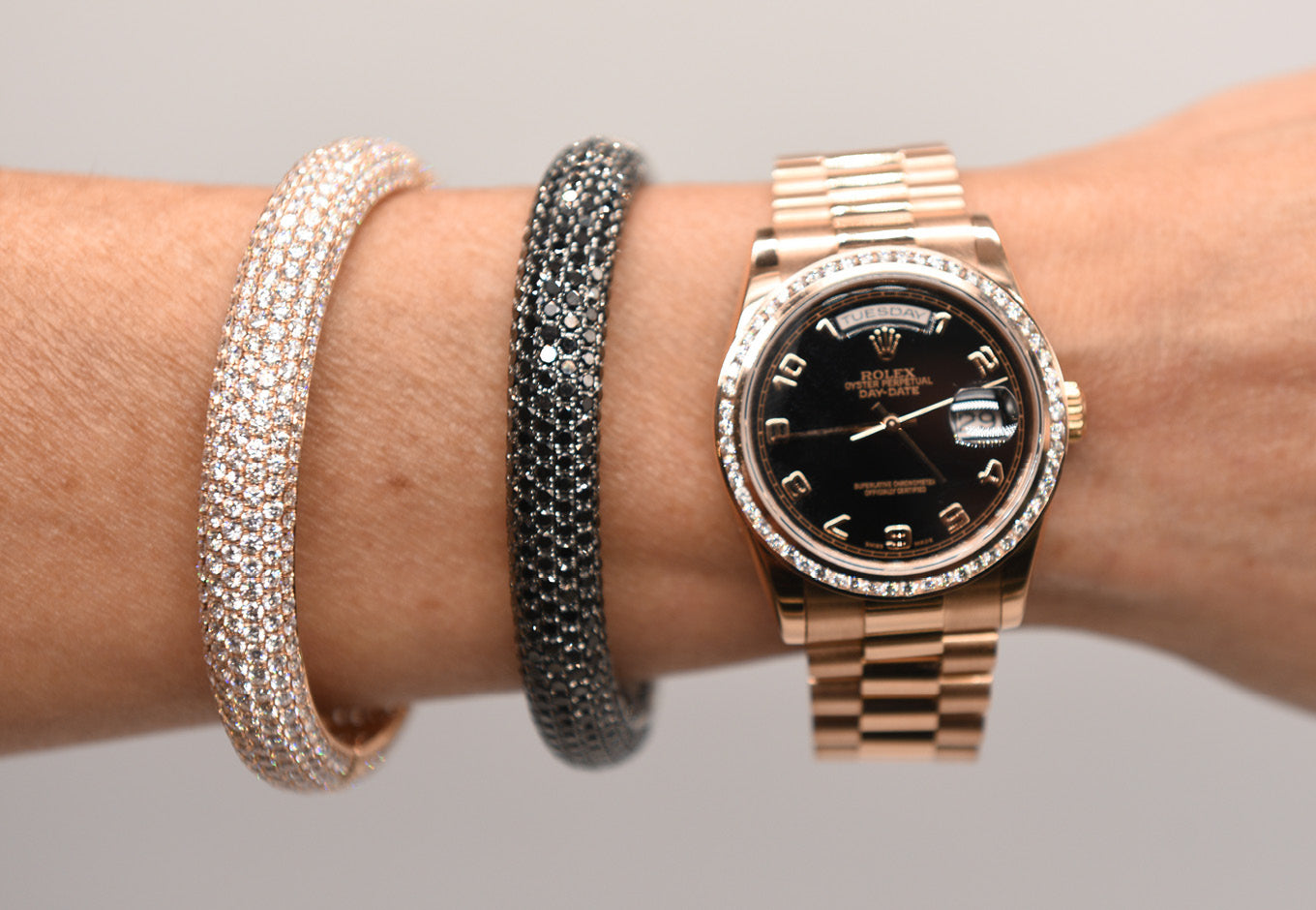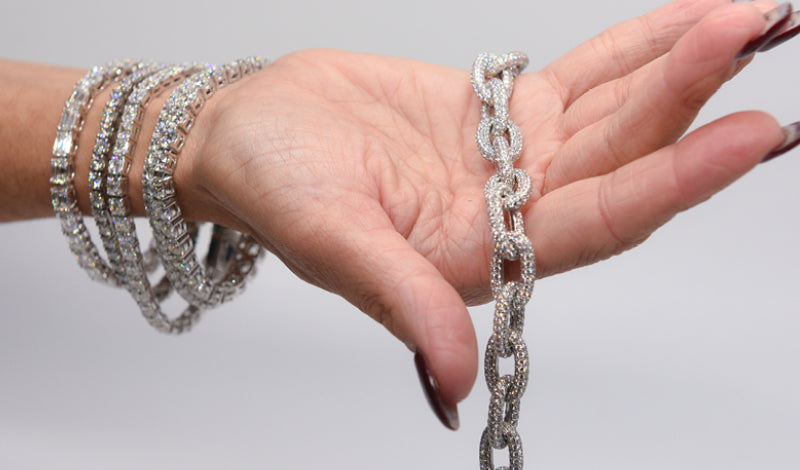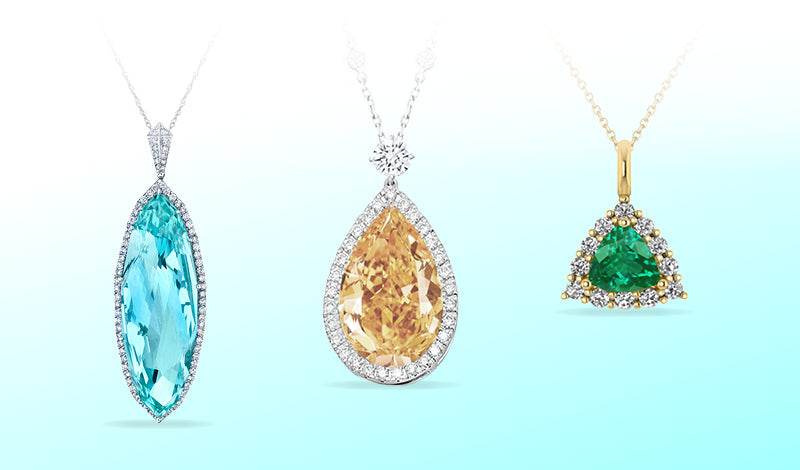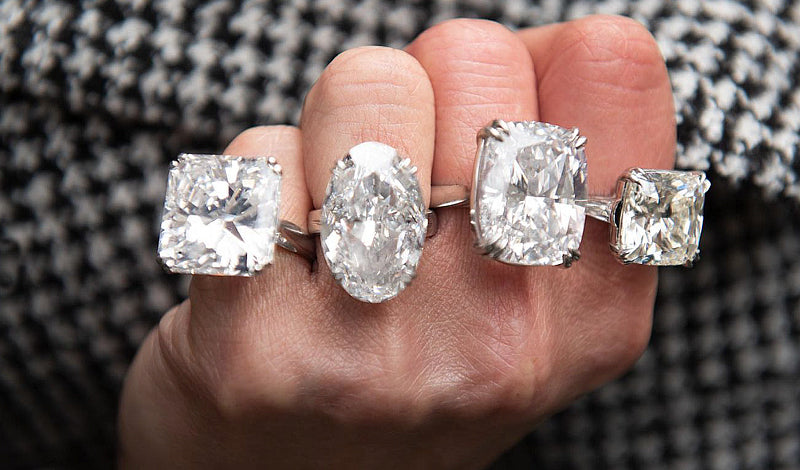
What to Look for in a Large Diamond
When it comes to luxury, nothing symbolizes elegance and success, quite like a large diamond. High-carat, gem-quality gemstones are not only admired for their beauty but also serve as significant investments. The allure of large diamonds stems from their rarity and the sophisticated craftsmanship needed to bring out their full potential. Whether worn as a centerpiece in an engagement ring, a pendant, or a statement piece, a large diamond makes a bold and lasting impression.
However, purchasing a large diamond requires careful consideration. Unlike smaller stones, any flaws or imperfections in a large diamond are more easily noticeable, and the stakes are higher due to the substantial investment involved. It’s essential to look at every detail to ensure you are getting the best possible quality and value. Factors such as diamond cut, carat weight, clarity, and color all play a crucial role in determining the brilliance and value of a high-carat diamond. In this guide, we will dive deep into these key considerations, helping you make an informed decision when shopping for large diamonds.
Understanding Carat Weight
What is Carat Weight?
Carat weight is one of the most well-known attributes of diamonds, but it is often misunderstood. A diamond’s carat weight refers to the actual mass of the stone. Carat weight is measured from the rough diamond stage, where the stone is uncut and unpolished. One carat is equivalent to 200 milligrams. The term “carat” derives from the carob seeds that early gemstone traders used as a reference for measurement due to their relatively uniform weight. Today, carat weight is a standardized unit of measure, and it is one of the most important factors when assessing the size and price of a diamond.
However, it’s important to note that carat weight alone doesn’t determine the size of a diamond. A high-carat diamond that is poorly cut may appear smaller than a lower-carat diamond that has been expertly cut to maximize surface area and brilliance.
Carat vs. Size
There is a common misconception that higher carat weight automatically means a visibly larger diamond. In reality, factors such as the diamond's cut and shape can influence how big the stone looks. For example, a well-cut diamond with a lower carat weight may appear larger than a poorly cut high-carat diamond. This is because the cut affects how light reflects through the stone, influencing its perceived size and brilliance.
A diamond's surface area, as determined by its shape and cut, often has a more significant impact on its appearance than its carat weight alone. For instance, an oval or pear-shaped diamond tends to appear larger than a round diamond of the same carat weight because of the way it elongates the finger or hand.
Price Implications of High-Carat Diamonds
As carat weight increases, the price of a diamond rises exponentially rather than linearly. This is because larger diamonds are rarer, and finding high-quality stones with minimal inclusions becomes more challenging as size increases. A high-carat diamond that exhibits exceptional cut, clarity, and color is extremely rare, making it a highly valuable asset.
For this reason, investing in large diamonds involves a higher price tag and requires careful consideration of all quality factors. While carat weight is a critical factor in the diamond's price, it's essential to balance carat weight with the diamond's other characteristics, such as cut, clarity, and color, to ensure you're getting a stone that not only looks impressive but also retains its value over time.
Diamond Cut and Its Impact on Large Diamonds
What is Diamond Cut?
Diamond cut refers to how well the diamond has been shaped and faceted to reflect light. Unlike carat weight, which is a direct measurement, cut is a quality assessment that determines how brilliantly a diamond sparkles. The cut includes aspects such as depth, symmetry, and the arrangement of the diamond's facets. When done correctly, a diamond’s cut maximizes its interaction with light, creating the sparkle and fire that diamonds are known for.
A well-cut diamond will reflect light internally from one facet to another and disperse it through the top of the stone, resulting in an extraordinary display of brilliance. On the other hand, a poorly cut diamond will allow light to escape from the sides or bottom, making the diamond appear dull and lifeless.
Importance of Cut for Large Diamonds
The importance of cut becomes even more pronounced with large diamonds. As the size of the diamond increases, any imperfections in the cut become more visible. Large diamonds have more surface area, and a poorly cut diamond will lack the brilliance that makes diamonds so desirable. Without the right cut, even a high-carat diamond may look flat and lifeless. A prime example of the importance of cut is the Cullinan diamond, which was expertly cut to maximize its brilliance and value.
When buying a large diamond, you should prioritize the cut to ensure that the diamond reflects light as brilliantly as possible. Even a small difference in the cut quality can drastically affect how the diamond appears, making it either a stunning showpiece or a disappointing investment.
Popular Cuts for Large Diamonds
Certain diamond cuts are better suited for large diamonds, as they enhance the stone’s natural brilliance and size. Popular cuts for large diamonds include:
- Round Brilliant Diamond: The most popular cut, known for maximizing sparkle and brilliance.
- Princess Cut: A modern square cut that offers a lot of sparkle.
- Emerald Cut: Known for its sleek, rectangular shape and “hall of mirrors” effect, the emerald cut provides a sophisticated, understated brilliance.
- Oval Cut: Elongates the appearance of the diamond, making it appear larger than it is.
- Cushion Cut: A square or rectangular cut with rounded corners, giving a softer look while maintaining brilliance.
Each of these cuts has its own appeal, and the best one for you depends on your personal preferences and how you want the diamond to appear in a piece of jewelry.
Proportion and Symmetry
The proportion and symmetry of a diamond's facets are crucial for large diamonds, as these factors directly impact how light interacts with the stone. Proper symmetry ensures that light is evenly distributed across the diamond, while balanced proportions allow for optimal light reflection. In large diamonds, even the smallest asymmetry can cause noticeable light leakage, diminishing the stone's brilliance.
Clarity and Color Considerations for Large Diamonds
Clarity
Clarity refers to the absence of internal inclusions and external blemishes in a diamond. The fewer imperfections a diamond has, the higher its clarity grade. The clarity scale ranges from Flawless (FL) to Included (I), with several grades in between, including Very Slightly Included (VS1, VS2) and Slightly Included (SI1, SI2).
In large diamonds, clarity is particularly important because inclusions and blemishes are easier to spot in larger stones. Imperfections can detract from the diamond’s beauty and overall value. For this reason, it’s essential to choose a large diamond with a higher clarity grade, preferably VS2 or better, to ensure that any inclusions are not visible to the naked eye. High-clarity diamonds, such as those found in the British Crown Jewels, are highly prized for their exceptional brilliance and historical significance.
Choosing the Right Clarity
While it’s important to select a diamond with good clarity, there is no need to overpay for a flawless diamond unless it’s essential to your purchase criteria. A diamond in the VS2 to VVS1 range can offer excellent clarity without the premium price tag of a flawless diamond. Larger diamonds often exhibit small inclusions that are invisible to the naked eye, so achieving a balance between clarity and price is key for large stones.
Color
Diamond color is graded on a scale from D (colorless) to Z (noticeable yellow or brown tint), with gem-quality diamonds falling in the D to F range. Colorless diamonds are the most desirable because they allow the maximum amount of light to pass through, resulting in the best sparkle. As the color grade descends, the diamond takes on a yellowish or brownish tint, which can reduce its brilliance.
In large diamonds, color is especially noticeable because of the stone’s size. A slight tint that might not be visible in a smaller diamond becomes more apparent in a large stone. For high-carat diamonds, it’s generally recommended to choose diamonds in the D to F color range, as these are considered colorless or near-colorless and will maintain the diamond’s brilliance.
Color for Large Diamond Jewelry
When choosing a large diamond for jewelry, especially engagement rings or other statement pieces, aiming for a gem-quality diamond in the D-F color range is ideal. This ensures that the diamond appears bright and brilliant in any light. If you are considering a yellow or rose gold setting, you might be able to choose a slightly lower color grade (G or H), as the metal’s warmth can complement the diamond’s slight tint.
The Importance of Shape in Large Diamonds
Diamond Shape vs. Cut
It’s important to understand the difference between a diamond’s shape and its cut. While the cut refers to how well the diamond's facets have been arranged to reflect light, the shape refers to the overall outline of the stone. Popular diamond shapes include round, oval, emerald, cushion, and princess, among others. The shape you choose will affect the diamond’s appearance, how large it looks, and how it sparkles.
Best Shapes for Large Diamonds
Certain shapes work particularly well for large diamonds because they enhance the stone’s natural size and brilliance. Some of the best shapes for large diamonds include:
- Round Brilliant Diamond: The round brilliant cut is known for maximizing light reflection, making it one of the most brilliant shapes available.
- Emerald: This step-cut shape emphasizes clarity and gives the diamond a classic, sophisticated look.
- Oval: Oval-shaped diamonds often appear larger than round diamonds of the same carat weight due to their elongated shape.
- Cushion: This shape offers a soft, romantic look and is known for retaining a lot of brilliance despite its larger facets.
Shape Preferences in Large Diamond Jewelry
In large diamond jewelry, different shapes can create varying effects, with the round brilliant diamond often appearing more traditional and timeless. For example, an oval or emerald cut diamond can elongate the fingers, creating a slender, graceful look in engagement rings. On the other hand, a round or cushion-shaped diamond often appears more traditional and timeless. When choosing the shape of a large diamond, it’s essential to consider not only personal preference but also how the diamond will be set in jewelry to achieve the desired effect.
Trends in Large Diamond Jewelry
Current Trends
Large diamond jewelry has always been a symbol of status and luxury, and recent trends reflect a growing preference for custom-designed pieces that allow for personal expression. Halo settings, in which smaller diamonds surround a central stone, are particularly popular for large diamond engagement rings, as they enhance the size and sparkle of the center diamond. Solitaires remain a classic choice, emphasizing the beauty of a single large diamond. A notable example is the Cullinan diamond, which was cut into nine large stones, each with its own unique brilliance and history.
Celebrity Influence
Celebrities and public figures have a significant influence on the demand for large diamonds. High-profile engagements and red-carpet appearances featuring large diamond rings or necklaces often set trends that trickle down into the general market. Celebrity endorsements and social media visibility continue to drive interest in unique, oversized diamond jewelry. High-profile diamonds, such as those in the British Crown Jewels, continue to influence trends and inspire new designs in large diamond jewelry.
Unique Designs and Settings
When it comes to setting a large diamond, the possibilities are nearly endless. Unique designs that incorporate intricate details, vintage-inspired settings, and colored accent stones are growing in popularity. The right setting can enhance the appearance of a large diamond by drawing attention to its brilliance and size, while also offering additional protection for the stone. The Cullinan diamond, with its unique cuts and settings, serves as an inspiration for many modern designs.
Trust Winston's Crown Jewelers For Your Next Large Diamond Purchase
Purchasing a large diamond is a significant decision, both financially and emotionally. The key to making a smart investment is understanding the fundamental aspects of diamond quality: cut, clarity, carat weight, and color. Each of these factors plays a crucial role in determining the beauty and value of a large diamond. When balanced correctly, these attributes result in a breathtaking stone that will stand the test of time.
For those seeking an exceptional selection of high-carat diamonds, Winston’s Crown Jewelers offers one of the largest inventories in Southern California. Our collection includes 5 to 30-carat diamonds in stunning colors such as classic white, fancy yellow, fancy pink, and the ultra-rare fancy blue. Our expertise doesn't end with diamonds; we also boast a vast gemstone collection, featuring rare finds like a 100-carat tanzanite and a 50-carat museum-quality emerald. Whether you're looking for a statement piece or a valuable investment, our highly trained staff and three GIA-certified gemologists are here to guide you every step of the way.
While our website showcases only a small selection of our offerings, we invite you to visit us in-store to explore the full range of large diamonds and rare gemstones that you never knew existed. At Winston’s Crown Jewelers, we help you make an informed and confident choice, ensuring your large diamond purchase is as dazzling and timeless as the stone itself. Contact us to get started!
